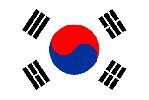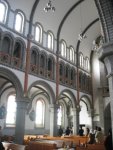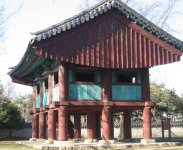 |
| South Korea |
| Jeolla
buk - do |
|
During the Proto-Three Kingdoms period, Jeolla
region was the center of the Mahan confederacy among Samhan.
There were 15 tribal countries out of 54 located in the region.
In the period of the Three States, this region came to belong to
Baekje when it absorbed Mahan. Baekje was destroyed by the Silla
and Chinese Tang dynasty allied force in 660 and ruled by Tang.
It became a part of Silla when Tang was expelled in 676. When
there were 9 states and 5 small capitals in Unified Silla in 685,
there were Wansan-ju (present Jeonju) and Namwon-gyeong (present
Namwon) in Jeollabuk-do, currently.
In 892, General Gyeon Hwon founded Hubaekje (Later
Baekje), this area continued to exist and was the center of the
country for about 50 years. In 936, during the rule of Singeom,
it was attributed to Goryeo Dynasty. From 900 to the time that
Hubaekje was attributed to Goryeo, Wansan-ju (present Jeonju) had
been its capital and the country ruled the whole Jeolla-do
region. In 996 this region was named as the Gangnam province, and
Korean government established the 4 states (Jeonju-Jeonju area,
Yeongju-Gobu area, Sunju-Sunchang area and Maju-Okgu area) in
North Jeolla region. Gangnam-do (Jeonbuk) and Haenam-do was
combined and titled as Jeolla-do in 1018. During the Joseon
Dynasty, as the administrative districts of the whole nation was
organized in Eight Provinces system in 1413, Jeolla-do took the
charge of vast areas of 1-prefectures, 4-autonomous county ,
4-protectorate, 12-country and 31-county covering present
Jeollanam-do, Jeollabuk-do and Jeju-do
< Back to the index



